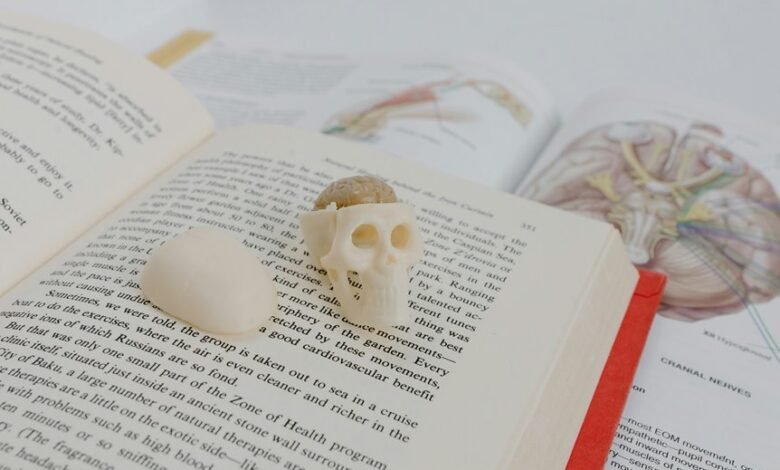Chemistry Class 10 Book 2025: A Complete Study Guide

The “Chemistry Class 10 Book 2025: A Complete Study Guide” presents a structured approach to understanding essential chemistry principles. It covers a range of topics, from chemical bonding to stoichiometry, providing students with practical applications and laboratory techniques. The guide also emphasizes safety and environmental considerations. As students navigate through these concepts, they may find themselves questioning how chemistry influences their everyday lives and the world around them.
Overview of Class 10 Chemistry Curriculum
Although the Class 10 Chemistry curriculum may seem daunting at first, it is designed to provide students with a solid foundation in essential concepts and practical applications of chemistry.
Key topics include chemical bonding, which explores how atoms unite, and reaction rates, which examines how quickly reactions occur.
Mastering these concepts enables students to understand the intricate behaviors of matter in their everyday lives.
Key Concepts in Chemical Reactions
Understanding key concepts in chemical reactions is essential for grasping how substances interact and transform.
Students learn about various reaction types, balancing equations, and the energy changes involved. Catalysts can significantly affect reaction rates, highlighting their real-world applications.
Additionally, awareness of safety precautions and environmental impacts ensures responsible experimentation, fostering a deeper appreciation for chemistry’s role in everyday life and sustainable practices.
Understanding the Periodic Table
The periodic table serves as a foundational tool in chemistry, organizing elements based on their atomic structure and properties.
It highlights periodic trends and group classification, showcasing element properties through chemical symbols.
Each element group’s characteristics, from noble gases to transition metals, reflect distinct electron configurations and metalloid characteristics, aiding in the understanding of elemental behavior and reactivity in various chemical contexts.
Exploring Acids, Bases, and Salts
Acids, bases, and salts are fundamental categories of compounds in chemistry, each playing a crucial role in various chemical reactions and processes.
Acid-base reactions often result in the formation of salts, which possess unique properties such as solubility and conductivity.
Understanding these compounds enhances one’s grasp of their interactions and their significance in everyday applications, fostering a deeper appreciation for the chemical world.
The Importance of Stoichiometry
In the realm of chemistry, stoichiometry serves as a vital tool for quantifying the relationships between reactants and products in chemical reactions.
By utilizing stoichiometric coefficients and mole ratios, students can conduct mass calculations and analyze reaction yield.
Understanding limiting reagents through balanced equations enhances quantitative analysis, allowing for precise chemical proportions in various experiments, ultimately fostering a deeper comprehension of chemical interactions.
Fundamentals of Organic Chemistry
Organic chemistry represents a branch of chemistry focused on the study of carbon-containing compounds and their structures, properties, and reactions.
Central to this field are functional groups, which determine the characteristics and reactivity of molecules. Understanding reaction mechanisms allows students to grasp how these compounds interact.
Mastering these concepts provides a foundation for further exploration of organic substances and their applications.
Practical Experiments and Laboratory Techniques
Conducting practical experiments and mastering laboratory techniques are essential components of a comprehensive chemistry education.
Emphasizing laboratory safety, students learn effective experimental design and measurement techniques. Proficiency in equipment handling and chemical storage enhances their skills.
Through hypothesis testing and data analysis, observation skills are sharpened, allowing learners to accurately interpret results. This hands-on approach fosters a deeper understanding of chemical principles and their applications.
Tips for Effective Revision
Mastering practical experiments and laboratory techniques lays a solid foundation for effective revision in chemistry.
Employing diverse revision strategies enhances retention, while structured study schedules keep students organized and focused.
Regularly revisiting key concepts and utilizing visual aids can significantly reinforce understanding.
Practice Questions and Sample Papers
While students prepare for their chemistry exams, incorporating practice questions and sample papers into their study routine can significantly enhance their understanding of the subject.
Utilizing various practice techniques helps reinforce concepts, while familiarizing oneself with sample formats aids in exam strategy. This approach not only boosts confidence but also ensures a comprehensive grasp of the material necessary for success in assessments.
Resources for Further Learning
To enhance their understanding of chemistry, students can explore a variety of resources that cater to different learning styles.
Additional textbooks and online courses provide foundational knowledge, while interactive simulations engage students practically.
Joining study groups fosters collaboration, and video lectures offer visual learning.
Educational podcasts provide insights on exam strategies, and various resource websites compile essential materials for comprehensive study.
Conclusion
In conclusion, the “Chemistry Class 10 Book 2025” stands as a guiding star for young scientists, illuminating the path to understanding the intricate world of chemistry. By blending theoretical knowledge with practical application, it empowers students to explore the chemical processes that shape their environment. Just as alchemists once sought to transform base metals into gold, this study guide equips learners with the tools to unlock the mysteries of matter and foster a lifelong passion for science.




